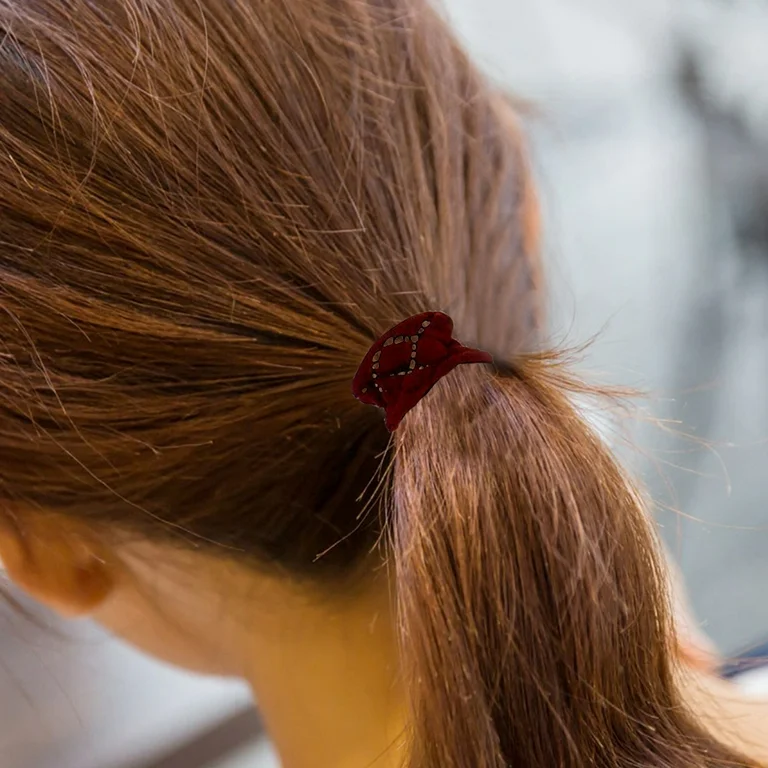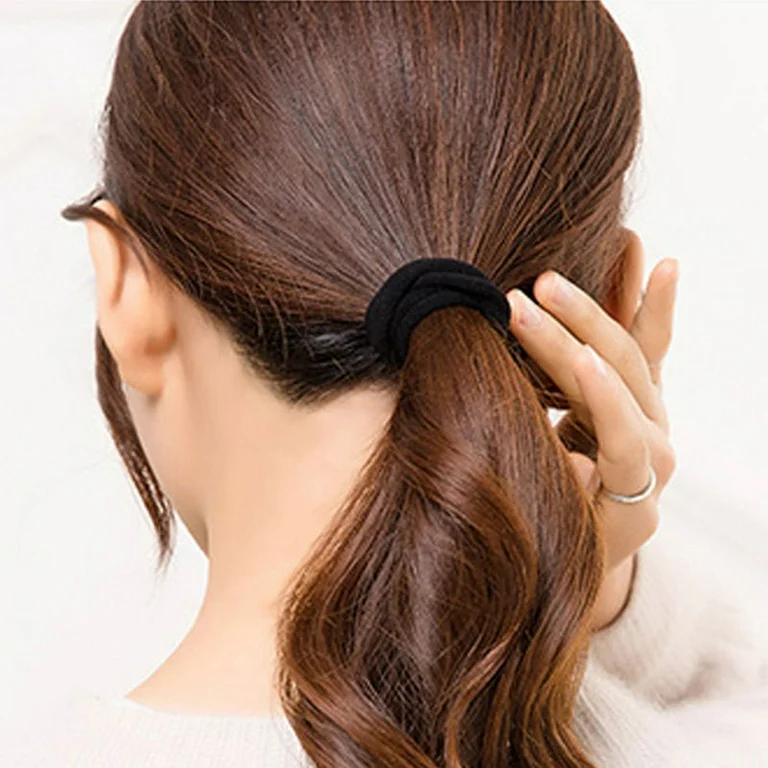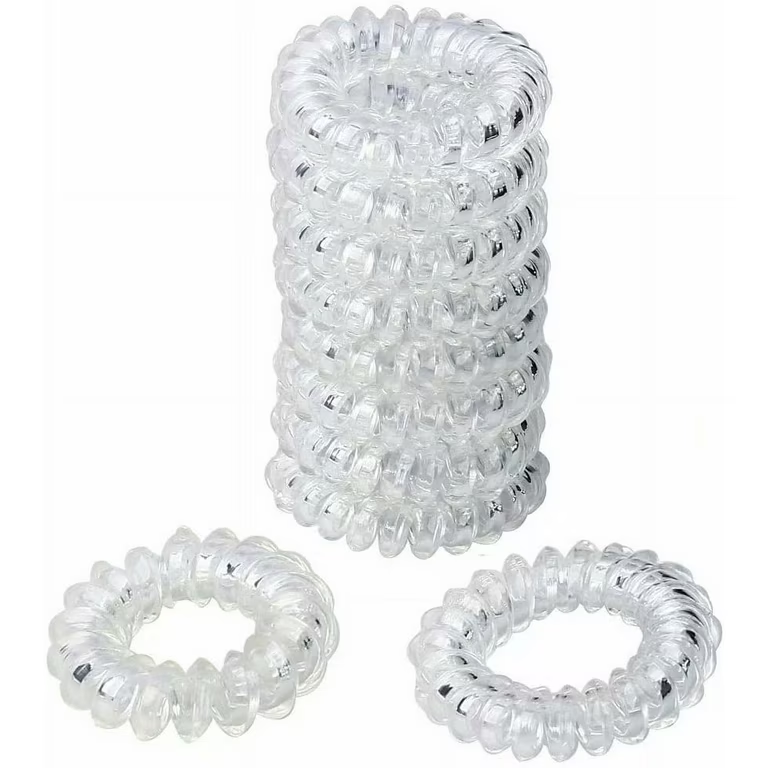
Best Hair Tie for Every Hair Type and Style
The Importance of Choosing the Right Hair Tie
Selecting the best hair tie goes beyond mere aesthetics; it plays a crucial role in hair health and styling efficacy. The right hair tie can make the difference between a comfortable, long-lasting hairstyle and one that causes damage or discomfort. High-quality hair ties provide secure hold without pulling or breaking hair strands. They accommodate different hair types, from fine and straight to thick and curly, ensuring a snug fit without slipping. Moreover, the best hair ties prevent headaches often associated with overly tight ponytails or buns.
They distribute pressure evenly across the hair, reducing the risk of breakage and split ends. Choosing the appropriate hair tie also enhances the longevity of hairstyles, keeping them neat and intact throughout the day. For those with active lifestyles, durable hair ties that withstand sweat and movement become essential. Additionally, the right hair tie can complement various outfits and occasions, from casual everyday looks to formal events. By investing time in finding the best hair tie, individuals can protect their hair, improve their styling options, and boost their overall confidence in their appearance.

Types of Hair Ties: A Comprehensive Overview
The market offers a wide array of hair ties, each designed to cater to specific needs and preferences. Traditional elastic bands remain popular for their simplicity and affordability. These come in various thicknesses and strengths, suitable for different hair volumes. Fabric-covered elastics provide a gentler option, reducing the risk of hair breakage and leaving fewer creases. Scrunchies, which experienced a resurgence in recent years, offer a fun and voluminous look while being gentle on hair. Spiral hair ties, also known as telephone cord ties, have gained popularity for their ability to hold hair without creasing or damaging it.
These plastic coil-like ties work particularly well for thick or curly hair. Ribbon hair ties provide a delicate and romantic option, perfect for special occasions or a bohemian aesthetic. No-slip grip ties feature a textured surface to keep hair in place without slipping, ideal for fine or slippery hair. Seamless hair ties offer a smooth surface that won’t snag or pull hair, making them suitable for everyday use. Bungee hair ties, which hook at both ends, allow for customizable tension and work well for thick or long hair. Lastly, eco-friendly options made from sustainable materials cater to environmentally conscious consumers. Understanding these various types helps in selecting the most suitable hair tie for individual needs and preferences.
Factors to Consider When Choosing the Best Hair Tie
Selecting the best hair tie involves considering several key factors. Firstly, hair type plays a crucial role. Fine hair requires gentler, lighter ties to prevent breakage, while thick or coarse hair needs stronger ties for a secure hold. The desired hairstyle also influences the choice; a sleek ponytail might require a thin, strong elastic, whereas a messy bun could benefit from a scrunchie. Consider the occasion as well; professional settings might call for discreet ties, while casual outings allow for more expressive options. The hair tie’s material matters too. Synthetic elastics offer durability, while natural materials like silk can be gentler on hair. For those with metal sensitivities, metal-free options are essential.
The size of the hair tie should match the volume of hair; too small a tie won’t hold thick hair, while too large a tie might slip out of fine hair. Comfort is paramount, especially for those who wear hair ties for extended periods. Look for options that don’t cause headaches or scalp tension. Durability is another important factor; high-quality hair ties should maintain their elasticity over time. For active individuals, water-resistant or sweat-proof ties are beneficial. Lastly, consider any specific hair concerns, such as preventing creases or minimizing damage. By weighing these factors, individuals can identify the best hair tie for their unique needs and preferences.

Top Picks for Different Hair Types
Different hair types require specific hair ties to achieve optimal results. For fine hair, gentle options like the Invisibobble Original traceless hair ring provide hold without causing breakage. These spiral-shaped ties distribute pressure evenly and don’t leave noticeable creases. Those with thick hair might prefer the Scünci No-Slip Grip Evolution hair ties, which offer strong hold without slipping. Curly hair benefits from satin or silk scrunchies, like those from Slip, which reduce friction and prevent frizz. For straight hair, classic elastics like Goody Ouchless hair ties work well, offering a secure hold without snagging.
Individuals with long hair often favor bungee-style ties like the L. Erickson Grab & Go ponytail holders, which allow for customizable tension. Those with short hair or layered styles might opt for mini elastics or small spiral ties to keep stray hairs in place. For textured or coarse hair, wider ties like the Kitsch Pro Satin Scrunchies provide gentle hold without causing breakage. Those prone to headaches should consider seamless options like the Bondhugs hair ties, which eliminate pressure points. Individuals with color-treated hair might prefer fabric-covered elastics to prevent color transfer. By matching hair ties to specific hair types, individuals can achieve better hold, comfort, and hair health.
Innovative Hair Tie Technologies
The hair tie industry continues to evolve, introducing innovative technologies to enhance performance and hair health. One notable advancement is the development of traceless hair ties, which use specialized materials to prevent creases and damage. These ties, often made from smooth plastic or silicone, distribute pressure evenly and don’t leave marks in the hair. Another innovation is the incorporation of anti-bacterial properties into hair ties, addressing hygiene concerns, especially for those who frequently engage in physical activities.
Some brands have introduced hair ties infused with beneficial ingredients like vitamins or essential oils, claiming to nourish the hair while holding it in place. Smart hair ties equipped with tracking devices have emerged, designed to monitor hair health and even remind users to remove the tie to prevent overnight damage. Water-activated hair ties that tighten when exposed to moisture provide extra security for swimmers or those in humid environments.
Eco-friendly innovations include biodegradable hair ties made from sustainable materials like organic cotton or bamboo fibers. Some companies have developed color-changing hair ties that respond to UV light, serving as sun exposure indicators. Magnetic hair ties offer easy application and removal, particularly beneficial for those with limited dexterity. These technological advancements in hair ties demonstrate the industry’s commitment to combining functionality with hair care, catering to diverse needs and preferences.

Styling Tips with Different Hair Ties
Mastering the use of various hair ties can elevate hairstyles and protect hair health. For a classic ponytail, start with a brush to smooth hair, then secure it with a strong elastic tie. To prevent tension headaches, avoid pulling the hair too tight. For a volumized ponytail, use a teasing comb at the crown before tying, and opt for a fabric-covered elastic to prevent slipping. When creating a bun, spiral hair ties work well as they can be twisted multiple times without overstretching. For a messy bun, use a scrunchie to achieve a relaxed, voluminous look.
To create beach waves, divide damp hair into sections, twist each section, and secure with small elastics overnight. In the morning, remove the ties for effortless waves. For braided styles, use clear elastics at the ends for a seamless look. When styling updos, bobby pins can be used in conjunction with hair ties for added security. For half-up styles, mini elastics or small spiral ties work best to hold sections without weighing them down. To prevent damage during workouts, use a soft, absorbent tie like a cotton scrunchie to catch sweat. For sleeping, loose, fabric-covered ties or scrunchies minimize friction and prevent creases. By matching the right hair tie to the desired style, individuals can achieve better results while maintaining hair health.
Caring for Your Hair Ties
Proper care and maintenance of hair ties can significantly extend their lifespan and effectiveness. Regular cleaning is essential to remove built-up oils, sweat, and product residue. For fabric-covered ties and scrunchies, hand washing in mild soap and cool water, followed by air drying, works best. Elastic bands can be soaked in warm, soapy water and rinsed thoroughly. Avoid using hot water or harsh detergents as these can damage the elastic or fabric.
After cleaning, allow hair ties to dry completely before use to prevent the growth of bacteria or mold. Proper storage also plays a crucial role in maintaining hair ties. Keep them in a cool, dry place away from direct sunlight to prevent color fading and elastic degradation. A small box or drawer organizer can help keep hair ties tangle-free and easily accessible. Avoid stretching hair ties when not in use, as this can weaken the elastic over time.
For those who wear hair ties frequently, rotating through different ties can prevent overuse of a single item, preserving elasticity. When removing hair ties, avoid pulling or tugging, which can cause both hair and tie damage. Instead, gently unwind the tie. If a hair tie shows signs of wear, such as fraying or loss of elasticity, it’s best to replace it to ensure optimal performance and prevent potential hair damage. By following these care tips, hair ties can remain functional and hygienic for longer periods.
The Impact of Hair Ties on Hair Health
While hair ties are essential for many hairstyles, their impact on hair health should not be overlooked. Frequent use of tight hair ties can lead to traction alopecia, a form of hair loss caused by constant pulling on the hair follicles. To prevent this, it’s crucial to vary hairstyles and avoid consistently tight ponytails or buns. The material of the hair tie also affects hair health. Metal clasps or rubber bands can snag and break hair strands, leading to split ends and frizz.
Opting for gentle, snag-free materials like fabric-covered elastics or silk scrunchies can minimize damage. The positioning of hair ties matters too; constantly tying hair in the same spot can cause breakage in that area. Rotating the position of ponytails or buns can distribute stress more evenly across the hair. Wet hair is particularly vulnerable to damage, so using gentle ties and avoiding tight styles when hair is damp is advisable.
Some hair ties can cause dents or creases in the hair, which may lead to weakening of the hair shaft over time. Choosing ties designed to minimize creasing can help maintain hair integrity. On the positive side, using appropriate hair ties can protect hair from environmental damage and reduce tangling. By being mindful of the type of hair ties used and how they’re applied, individuals can maintain healthier, stronger hair while still enjoying versatile styling options.

Eco-Friendly and Sustainable Hair Tie Options
As environmental consciousness grows, the demand for eco-friendly and sustainable hair ties has increased significantly. Many brands now offer hair ties made from recycled materials, such as plastic bottles or fabric scraps, reducing waste and environmental impact. Biodegradable options are gaining popularity, with ties made from natural materials like organic cotton, bamboo fibers, or even wood pulp. These eco-friendly alternatives come in various styles and colors, catering to different preferences while maintaining a commitment to sustainability.
Some companies have introduced compostable hair ties, which break down naturally over time without leaving harmful residues. The move towards sustainability extends to packaging as well, with many brands opting for minimal, recyclable, or biodegradable packaging for their hair tie products. Some manufacturers use eco-friendly dyes and energy-efficient production methods to create their hair ties, further reducing environmental impact. The durability of many sustainable hair ties often surpasses that of traditional options, providing both environmental and economic benefits.
Some brands donate a portion of their profits to environmental causes, allowing consumers to support sustainability efforts through their purchases. As awareness of environmental issues continues to grow, the trend of eco-friendly hair ties is likely to expand, offering more options for those who wish to combine functionality with environmental responsibility in their hair care routines.
The Future of Hair Ties: Trends and Innovations
The hair tie industry continues to evolve, with emerging trends and innovations shaping its future. Smart hair ties equipped with technology to monitor hair health and styling habits are on the horizon. These could potentially sync with smartphone apps to provide personalized hair care advice. Customizable hair ties that allow users to adjust size, tension, and even color on demand may become mainstream. 3D-printed hair ties tailored to individual head sizes and hair types could offer unprecedented comfort and hold.
As the beauty industry focuses more on inclusivity, we may see a wider range of hair ties designed for diverse hair textures and cultural styling practices. The trend towards multifunctional accessories might lead to hair ties that double as bracelets or even incorporate small storage compartments for bobby pins or hair products. With growing health consciousness, hair ties infused with beneficial ingredients like vitamins or essential oils might gain popularity. Virtual and augmented reality technologies could allow users to preview how different hair ties look with various hairstyles before purchase.
The emphasis on sustainability will likely drive further innovations in eco-friendly materials and production methods. As fashion cycles continue, we can expect revivals of vintage hair tie styles alongside completely new designs. The integration of hair ties with wearable tech, such as fitness trackers or health monitors, might also emerge. These future trends and innovations promise to keep hair ties at the forefront of hair fashion and functionality, continually adapting to meet changing consumer needs and preferences.

